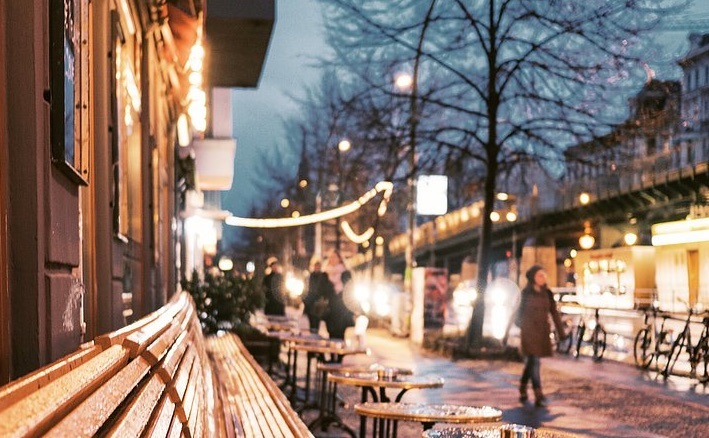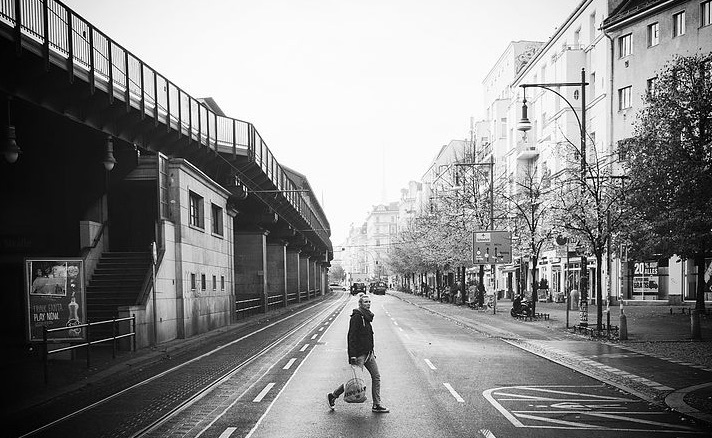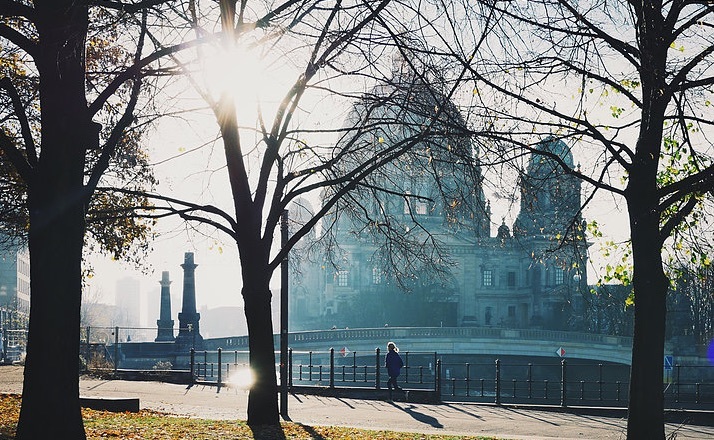For years, Joerg Nicht has been traveling and documenting the streets with photography, whether it be his hometown of Berlin or one of the many cities he’s visited. It was only relatively recently that Joerg became involved with iPhone photography, and soon Instagram, which opened up his audience to the wider community of the internet at large, and led to him rocketing to Instagram fame, with 556,000 followers to date. While his art is indeed beautiful for the way it captures the dynamics and angles of the streets, for Joerg, it is about movement, capturing people on their solitary journeys in their own towns.
The unification of these two qualities is certainly one of the many keys to his success, and we interviewed him about his artistic process that leads to this unifications, as well as his life as a traveling photographer.
How long have you been a photographer for? What made you start photography?
Joerg Nicht: I began taking pictures since I was twelve, inspired by my uncle’s old photography magazines. I’ve been photographing ever since, really, first shooting with analogue and then digital. When I bought my first iPhone (at the time an iPhone 4) I noticed that I was taking even more pictures than before.
 In the Photo: Joerg Nicht; Photo Credit: Joerg Nicht
In the Photo: Joerg Nicht; Photo Credit: Joerg Nicht
A lot of your street photography focuses on an individual. What made you adopt this technique?
J. N.: There are fundamentally two reasons for the composition of my pictures: one relates to form, the other with my subjects. The visual possibilities to reduce the complexity of an image are very limited with an iPhone and with similar cameras. This means that I can’t bring out a particular person by throwing focus on them. At the same time, pictures on Instagram in particular mustn’t be too complex. One must be able to appreciate it on a small smartphone display. That’s the formal reason, but there’s also a more substantial one, this being that I observe people who are on the move from A to B. People commuting to their jobs in the morning tend to be alone on their journey. How are they navigating the city on their own? That’s one of the things that interests me.
Related articles: “WALKING IN THE SHOES OF SEBASTIAN ERRAS IN PARIS”
“ENJOY THE MOMENT WITH ALEX STROHL”
In the Photo: The city lights of Berlin. Photo Credit: Joerg Nicht
You say you use a Canon, a Leica, a Lumix and smartphones to take your photos. Does each of the cameras have different strengths?
J. N.: Absolutely. A Canon is far too big and too noticeable for street photography. The Leica and the Lumix are much better suited. The Lumix is phenomenally quick, whilst at the same time being light. Smartphones don’t attract attention and I am more nimble and physically agile with them compared to when I use other cameras.
Black and white pictures … are the high art of photography.

Photo Credit: Joerg Nicht
J. N.: Black and white pictures to me are the high art of photography. A colour photo offers more opportunities for differentiation, but different colours can only be represented by different shades of grey in a black and white photo. As a rule of thumb, one can therefore say that the composition of a black and white picture must be better. If you get this right with black and white photography, you can use the structures of the urban setting better when composing the picture. The best street photographers succeed in using the reduction through the colour grey as a means to reduce complexity. This way a passer-by’s red jacket doesn’t distract. On the other hand, the light of the blue hour can make the most wonderful street photos possible. A final point is about the longevity of a picture: colours are subject to ever-changing fashions. I think that black and white stands the test of time longer.
For a full mindmap behind this article with articles, videos, and documents see #photography
Photo Credit: Joerg Nicht
Street and travel photography expose you to a lot of lives and life stories. Are there any stories that have stuck with you?
J. N.: Particularly when I travel I realise how little I can capture in pictures. Most stories remain untold. In Jo’burg, I once took a shared taxi, which you shouldn’t do if you read the travel guides. That being said, I did have a tour guide with me and after we got into the initially empty taxi, more and more people slowly joined us until the car was full. The car hit the road. A Rihanna song sounded loudly from the speakers, and when my destination arrived everyone else in the taxi seemed irritated that I was sat in the back corner but was the first who wanted to get out. For me, Rihanna will always remain a part of this journey through Johannesburg.
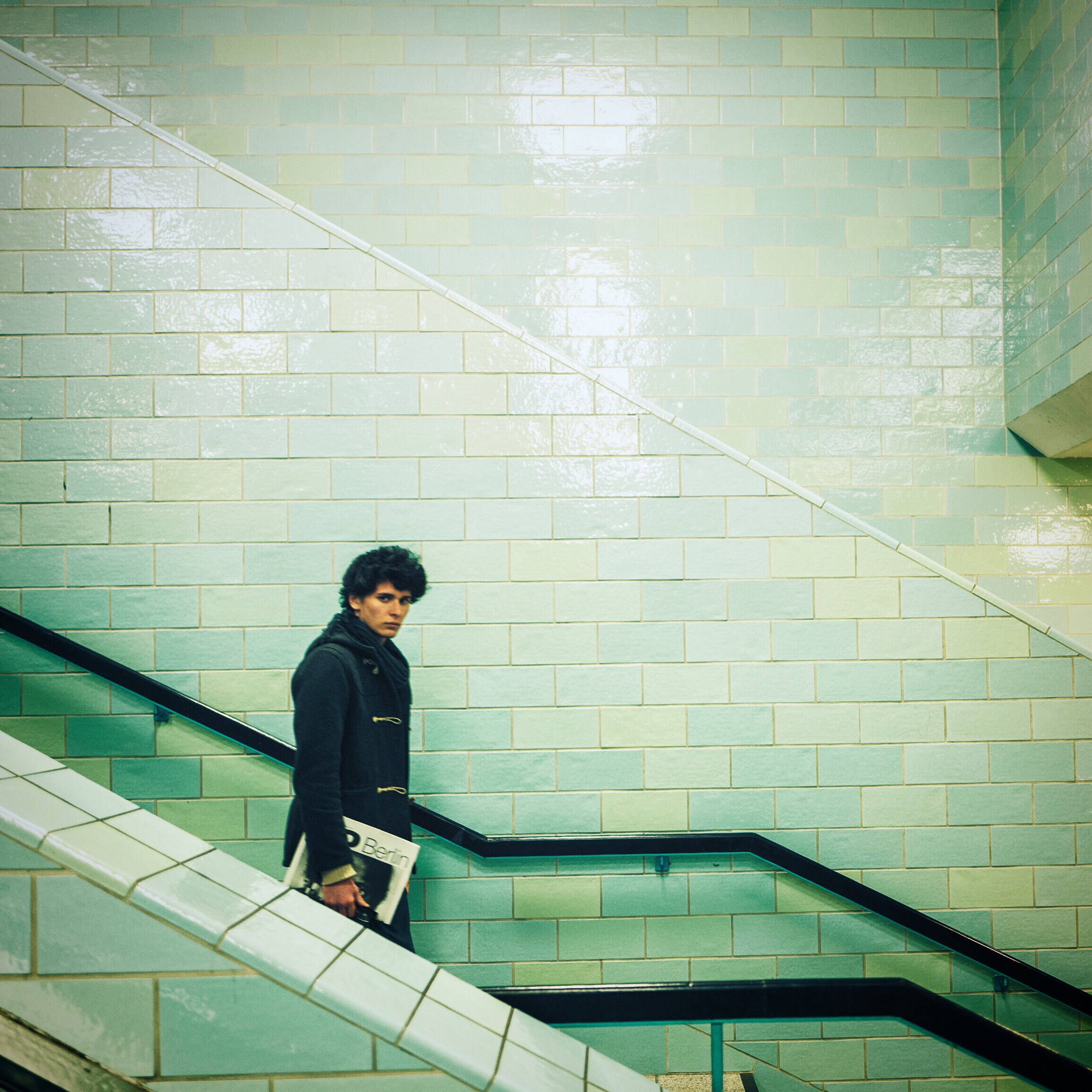
Photo Credit: Joerg Nicht
When traveling do you often revisit places that you’ve photographed before? Could you tell us what that experience is like?
J. N.: In recent years I went to many places that I had not been to before. Then the question that occupies my mind is whether I’ll return to these places. I’ve seen Uluru in the heart of Australia as a grey mountain, as it was raining. Should I see the mountain again, it is likely going to be red in normal light. This is an example of being able to always see something different at the places that I visit. Even more interesting are the places that I think I know well. A few years back, I took a picture of a street close to my parents’ house with my smartphone. There was a light drizzle, a few street trees were reflected by the plain, wet tarmac and further back, one could still see a few houses. I had seen this scene a thousand of times and in all seasons. I uploaded the picture onto Instagram and it was a big success. The little street became famous. Yet something else was important: when I now look at the street, it is like listening to poetry to me.
Photo Credit: Joerg Nicht
Which photograph of yours are you proudest of?
J. N.: That’s a difficult one. I’d like to pick two pictures which I took last year. The first photo shows dancing couples and their shadows by the Moskva River. The other picture was shot a few weeks later in San Francisco: an ordinary street scene. A wall is getting a new lick of paint while a man leans against it.
Recommended reading: “IN THE FUTURE WE WILL PHOTOGRAPH EVERYTHING AND LOOK AT NOTHING”
_ _


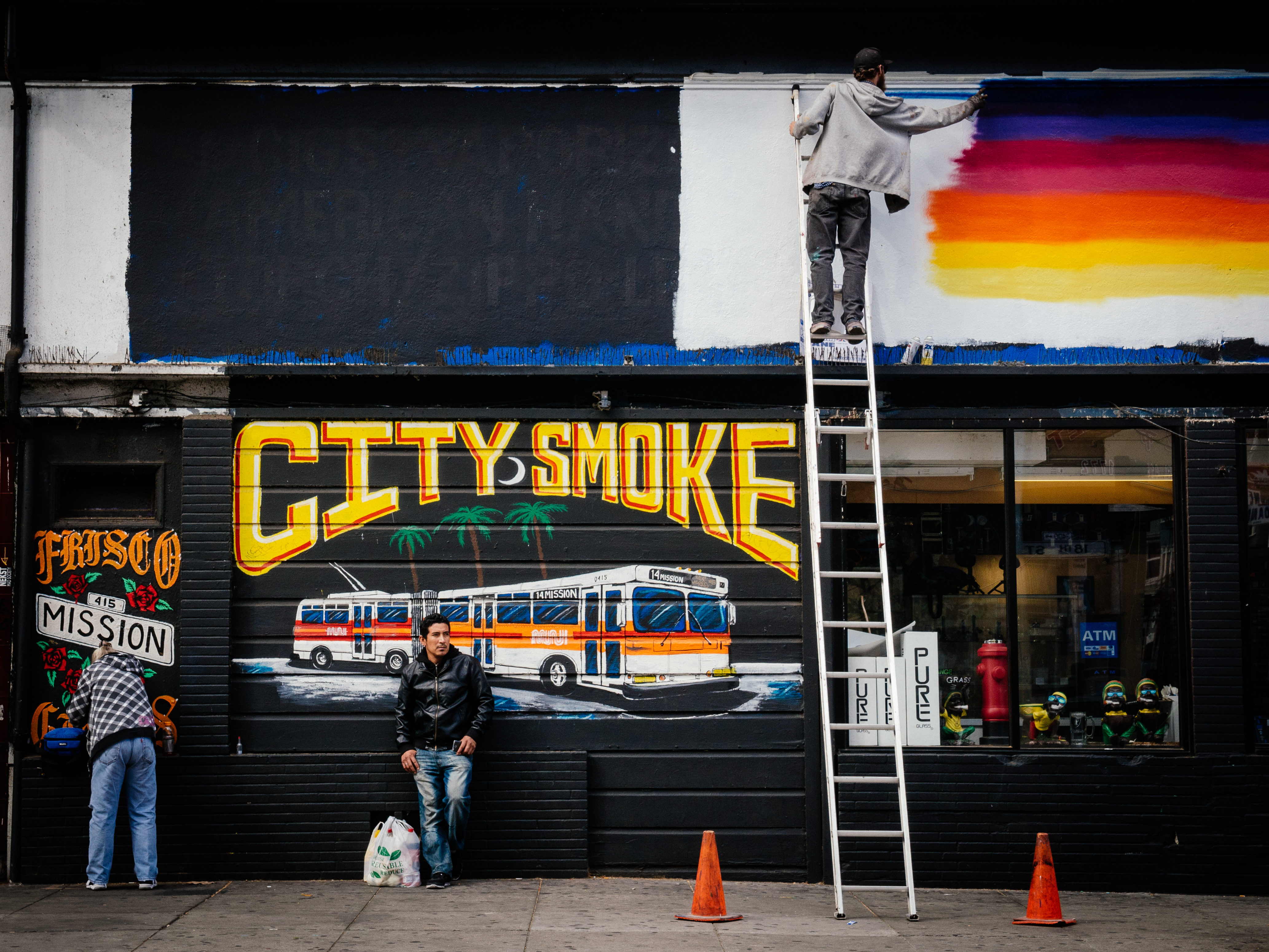
 In the Photo: Joerg Nicht; Photo Credit:
In the Photo: Joerg Nicht; Photo Credit: 